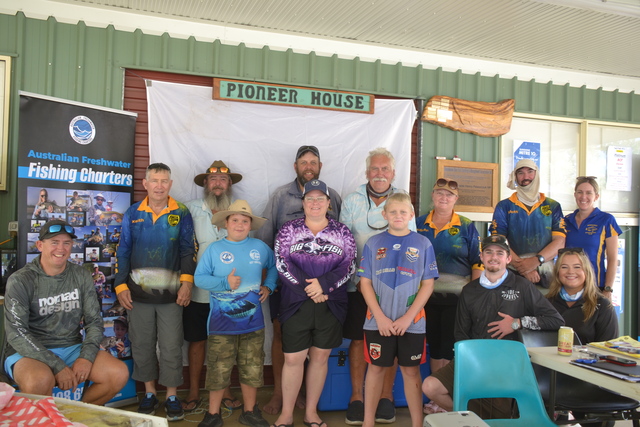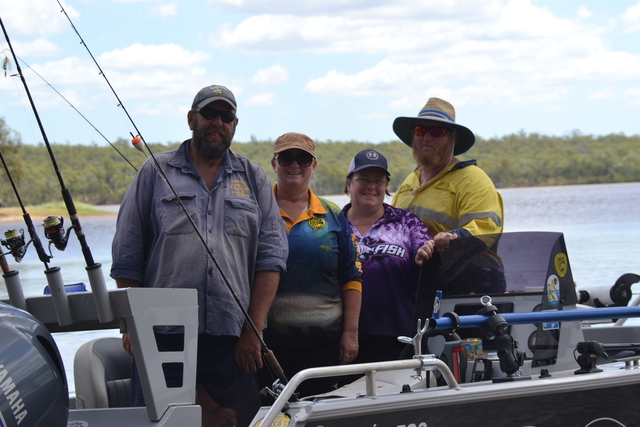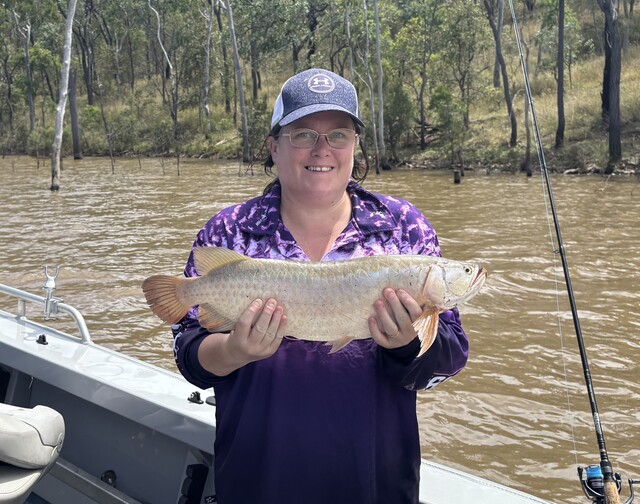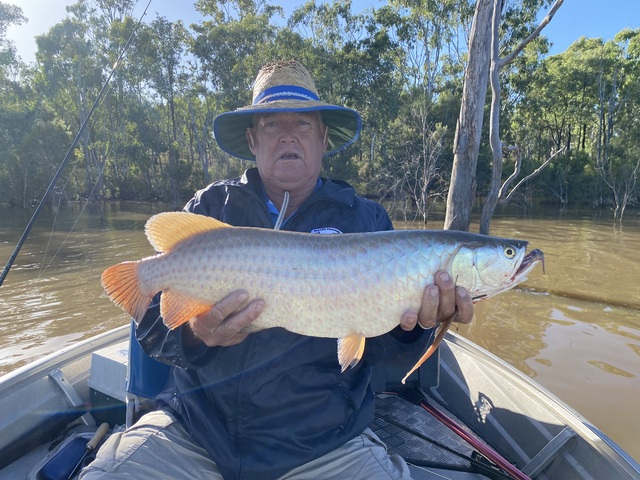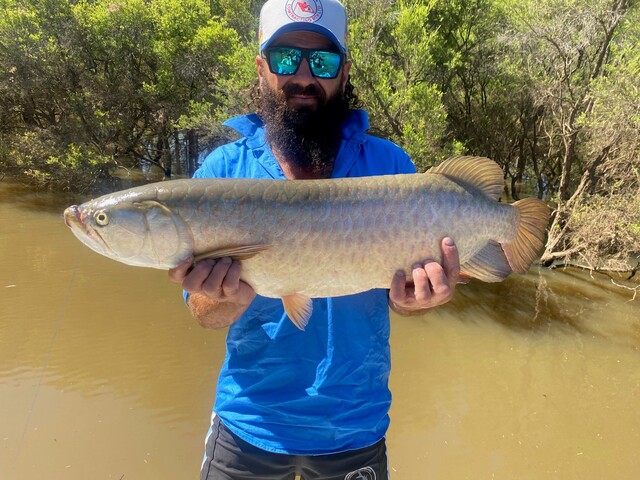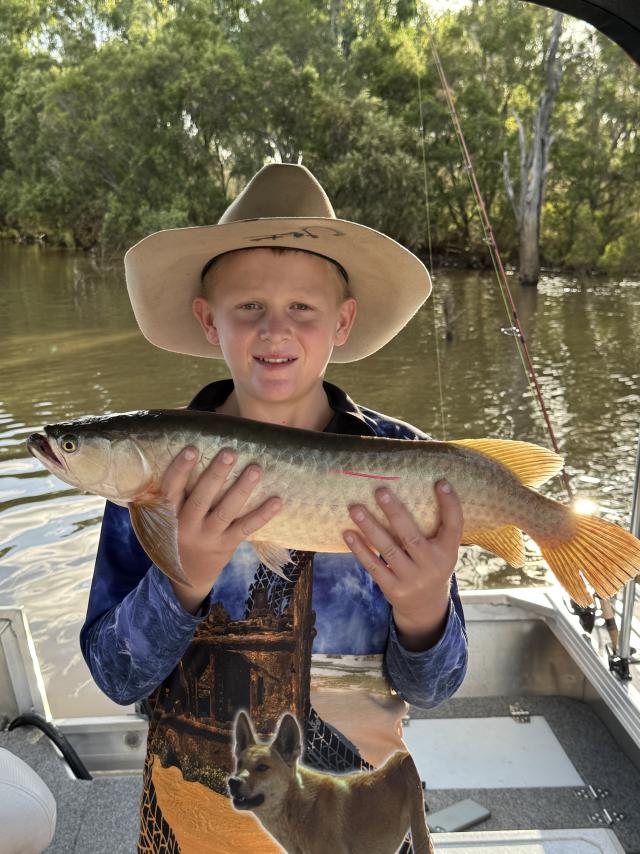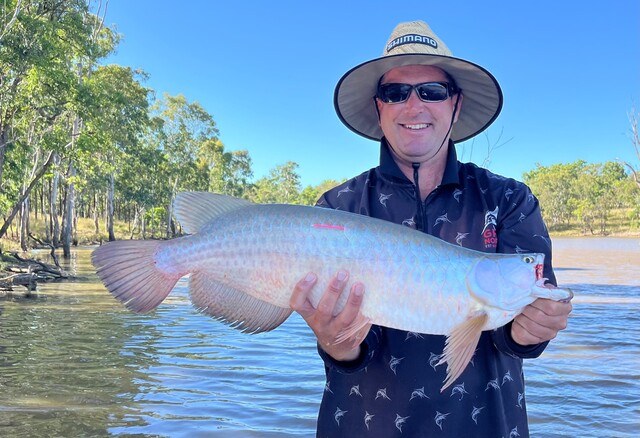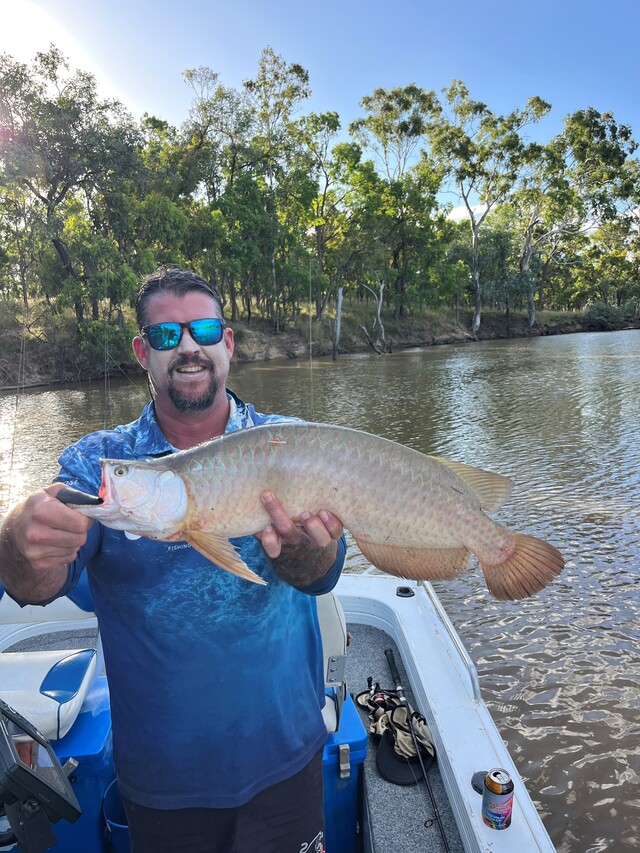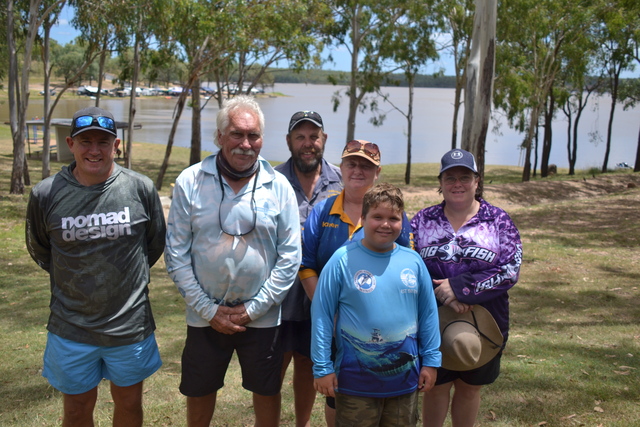
Tag-A-Toga was not an ordinary fishing expedition.
The Kingaroy Sportsfishing Club’s event saw about 50 anglers enjoy Lake Boondooma, near Proston, for the 10th annual Tag-a-Toga on 28 February to 2 March.
Club Secretary Karen Bradwell explained that this was a citizen science project to research their target species, the resident southern Saratoga.
“You can track the whole fish’s life from the tag,” she said.
Limited to just 20 boats to ensure the South Burnett dam was not overwhelmed, participants catch, tag the fish with a pink tag and then release the fish.
President Glen Unverzagt shared that the data collection was quite extensive, including what lure or bait, time of capture, and terrain where each fish was caught
“At event closure, this data is shared with entrants to help fine tune angler’s skills to have better success chasing these mighty fish,” Mr Unverzagt said.
The Saratoga captured over the weekend ranged from 450mm to 805mm, proving there is a good, self-sufficient breeding process underway. This was supported by a larger size range which points to suitable living conditions in the dam.
“If you haven’t targeted these fish in Boondooma dam yet, do yourself a favour, and get in contact with the club to learn the techniques that work the best,” event organiser Bob Dover said.
Kingaroy Sportsfishing Club Vice President Shaun Manthey shared the citizen science project collects data on population, growth and growth rate dynamics of Lake Boondooma Saratoga.
“The talented anglers adjusted to the conditions with a total of 46 Saratoga caught,“ he said.
Each of these fish were released and most were tagged with the Queensland Sportsfishers pink tags which will help the citizen scientists learn more about these creatures.
“It’s great to see people unlocking the secrets in landing these great fish and this is proven with the results this year,” Mr Manthey said.
Gympie fisherman Robbie Proctor caught a 795mm model, however the longest Saratoga caught was 805mm by Pete Drakos who was fishing out of a ski boat.
“Fish of this size are very crafty and landing one of these are a testament to the anglers’ ability,” Mr Manthey said.
Non-target species were also caught and released, including Australian Bass and Golden Perch.
“We’re really just here to research data on the Saratoga… you might catch 30 other species, but the data for this weekend is the Saratoga,“ Treasurer Carolyn Barritt said.
The 2025 Tag-a-Toga marked the first year at Lake Boondooma, after nine years of research was wrapped up at Lake Borumba, near Imbil.
Ms Bradwell shared the club has locked in Tag-A-Toga at Boondooma for a total of six years until February 2030 for the research project.
“It’s all about research and science, and fun,” Ms Bradwell said, sharing this move to Boondooma was “really exciting” with fishing tourism on the horizon for the South Burnett.
Club tagging officer Mat Cutler explained Queensland Sportsfishing only tag enough fish to gain sufficient information on the local population.
“After 9 years and over 700 Saratoga tagged in Borumba through this event alone, it was time to move locations,” Mr Cutler said.
Funds raised from previous Tag-a-toga events were used to sponsor Boondooma Dam Fish Stocking and Management Association to obtain and transport brood stock to Boondooma Dam in 2016.
“We have been very eager to understand how they were thriving in their new home,” Mr Cutler said.
Mrs Barritt is keen to see what the project will reveal about the Saratoga.
“Sometimes you can check the numbers and realise that the same fish was caught at the Condamine,” Mrs Barritt said.
“It shows you the size and journey of the fish by that one little number.”
The Saratoga are renowned as a premier freshwater sports fish due to their willingness to take both lures and flies and their acrobatic performances once hooked.
The fish’s upward facing eyes make them a target for surface presentations, however, their hard, bony mouths make hooking and landing them challenging.
Taking away the ‘bite’ of a regular fishing competition, Tag-A-Toga had a more relaxed environment, focusing heavily on everyone enjoying themselves rather than winning.
This non-competitive approach encouraged teams to share tactics, which resulted in more captures and therefore, more data collected to create a greater understanding of these important fish in Queensland impoundments.
The club now looks forward to continuing their research next year and beyond.
“I believe we only scratched the surface this year, hopefully with better conditions in 2026, we will showcase the first-class fishery we have here in the South Burnett,” Mr Dover said.

